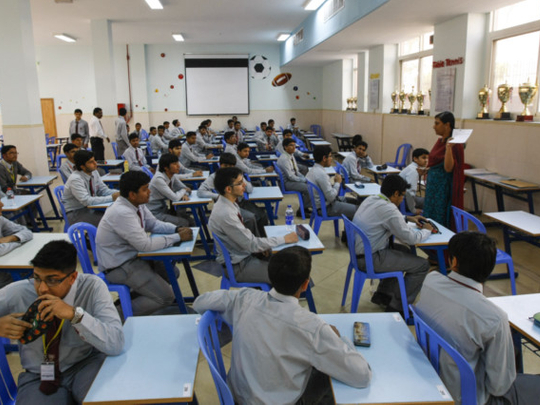
When I was a child, Nintendo Game Boys were banned from schools, mobile phones were confiscated for the day if spotted, and my use of technology was largely restricted to MSN messenger. Today, that life is a distant memory. In schools across the country, iPads and digital teaching boards are regular features in classrooms. Student exposure to interactive learning beyond the spoken word and printed textbooks are expected, no longer the exception but the norm. But is this medium being used wisely?
The UAE has jumped on the smart learning bandwagon in its wilful embrace of e-services. The Smart Learning Program was launched in 2012 to bring the latest technology to classrooms across the country. By 2017, the initiative is expected to reach all government schools. In the field of higher education, just last year, 6,200 students at the Higher Colleges of Technology received iPads to help improve their English proficiency.
Call me a cynic, but I can’t help but wonder whether this information and communication technology (ICT) revolution is the right way to go. On the one hand, education technology providers tout positive outcomes of ICT learning including higher grades, a better attitude and engagement, and a more enriched learning experience for students. However, empirical evidence to support these claims is lacking. Studies of countries from India to Peru find no significant academic achievement associated with computer rollouts in local schools. In instances where technological investments divest resources away from more substantive reforms, ICT learning could even prove to be counterproductive.
Teaching and technology: the two T’s for success
So what methods actually work in improving student performance? The Programme for International Student Assessment (PISA) finds that countries with high performance in its tests tend to be those with a national commitment to high education standards, and to quality teachers and administrators. In fact, teachers in these countries share striking similarities: they are well-paid, well-educated, have a clear-cut career progression, and are taught how to teach.
Classrooms in the UAE in contrast are at times too focused on technology and not focused enough on teaching. Indeed, while a new legislation to set a minimum salary for private school teachers will soon be debated by the Federal National Council, the validation of teaching as a profession remains to be realized. Some argue that teachers need to be incentivised through performance-based monetary rewards. However, these rewards should be viewed with caution; they may nurture rivalries where collaboration should take place, and encourage some to teach to the test rather than to develop a coherent and long-lasting knowledge base among students.
Instead of a monetary incentive framework, the country should encourage other forms of validation. A government-led campaign emphasizing the worth of teachers would be a step in the right direction. So, too, would teacher-training programs. Already, the Etisalat Education Technology Centre, a joint venture by Etisalat and the Ministry of Education, in association with Microsoft, holds promise in this regard by bringing together teachers partly in an attempt to optimise the use of technology in the classroom. This initiative should be expanded, involving a training and certification component that is mandatory for teachers in the country to undertake.
To be sure, we should not abandon technology as a lost cause. ICT learning can cater to different forms of information retention. For example, a virtual museum exhibit documenting the trade history of the UAE could help a visual-spatial learner absorb material more efficiently than traditional lectures and history textbooks. An online blog could provide students with an interactive platform to continue classroom discussions beyond school hours. Especially in instances where student motivation is assured and technology acts to enhance teaching, the benefits of ICT are substantial. In these cases, teachers can improve student comprehension — they could act as tour guides complementing the virtual exhibit, or as moderators in online discussions. Whatever the role, teachers could aid in students’ understanding of what they are working with and the information they are processing through their 3G devices.
Substantive education reform in the UAE is promising; however, it requires a concurrent shift in how these changes are communicated. Teachers are conduits of information, and facilitators of discussion and learning that help personalize the education process. Rather than promote technology as the saviour of modern day education, we need to first emphasise teaching and harness technology to ensure its effectiveness. Technology should be a medium, not the messenger.
Vidya Diwakar is a research analyst at The Delma Institute, specialising in socio-economic issues in the Mena region.










